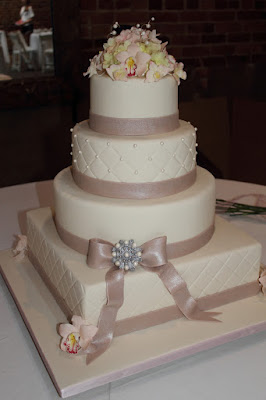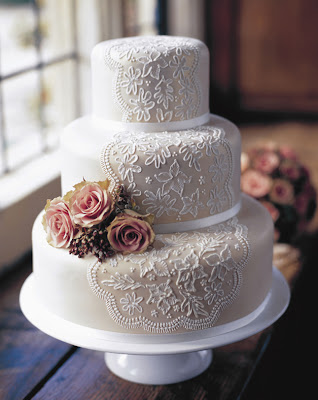The birthday cake has been an integral part of the birthday celebrations in western European countries since the middle of the 19th century, which extended to Western culture.
Certain rituals and traditions, such as singing of birthday songs,
associated with birthday cakes are common to many Western cultures. The
Western tradition of adding lit candles to the top of a birthday cake
originates in 18th-century Germany. However, the intertwining of cakes
and birthday celebrations stretch back to the Ancient Romans. The
development of the birthday cake has followed the development of
culinary and confectionery advancement. While throughout most of Western
history, these elaborate cakes in general were the privilege of the
wealthy, birthday cakes are nowadays common to most Western birthday
celebrations. Around the world many variations on the birthday cake, or
rather the birthday pastry or sweets, exist.

The tradition of placing candles on birthday cake is attributed to early Greeks,who used to place lit candles on cakes to make them glow like the moon. Greeks used to take the cake to the temple of Artemis. Somesay that candles were placed on the cake because people believed that the smoke of the candle carried their prayers to gods. Others believe that the custom originated in Germany where people used to place a large candle in the centre of the cake to symbolize ‘the light of life’.
In present times too, people place candles on birthday cakes and a silent wish is made before blowing out the candle. It is believed that blowing out all candles in one breath means the wish will come true and the person will enjoy good luck in the coming year. Some also smear out the name of the person before slicing of the cake to bring good luck.

classical Roman culture, 'cakes' of flat rounds made with flour containing nuts, leavened with yeast, and sweetened with honey were occasionally served at special birthdays, but more often at weddings as in Ancient Greece.
In early Europe, the words for cake and bread were virtually interchangeable; the only difference being that cakes were sweet while bread was not. In the 15th century, bakeries in Germany conceived the idea of marketing one-layer cakes for customers' birthdays as well as for only their weddings, and thus the modern birthday cake was born. During the 17th century, the birthday cake took on more or less its contemporary form. However, these elaborate cakes, which possessed many aspects of contemporary cakes (such as multiple layers, icing, and decorations), were only available to the very wealthy. Birthday cakes became more and more proletarianized as a result of the industrial revolution, as materials and tools became more advanced and more accessible.

The cake, or sometimes a pastry or dessert, is served to a person on
his or her birthday. In contemporary Western cultures, two rituals are
prominent: the singing of the traditional birthday song and the blowing
out of candles decorating the cake by the birthday person.
The service of a birthday cake is often preceded by the singing of "Happy Birthday to You" in English speaking countries, or an equivalent birthday song in the appropriate language of that country. In fact, the phrase "Happy Birthday" did not appear on birthday cakes until the song "Happy Birthday to You" was popularized in the early 1900s. Variations on birthday song rituals exist. For example, in New Zealand, "Happy Birthday to You" is sung and is followed by clapping, once for each year of the person's life and once more for good luck. In Uruguay, party guests touch the birthday person's shoulder or head following the singing of "Happy Birthday to You". In Ecuador, sometimes the birthday person will take a large bite off the birthday cake before it is served.
The birthday cake is often decorated
with small taper candles, secured with special holders or simply
pressed down into the cake. In North America, Australasia and the U.K.,
the number of candles is equal to the age of the individual whose
birthday it is, sometimes with one extra for luck. Traditionally, the
birthday person makes a private wish, which will be realized if all the
candles are extinguished in a single breath.

The tradition of placing candles on birthday cake is attributed to early Greeks,who used to place lit candles on cakes to make them glow like the moon. Greeks used to take the cake to the temple of Artemis. Somesay that candles were placed on the cake because people believed that the smoke of the candle carried their prayers to gods. Others believe that the custom originated in Germany where people used to place a large candle in the centre of the cake to symbolize ‘the light of life’.
In present times too, people place candles on birthday cakes and a silent wish is made before blowing out the candle. It is believed that blowing out all candles in one breath means the wish will come true and the person will enjoy good luck in the coming year. Some also smear out the name of the person before slicing of the cake to bring good luck.
classical Roman culture, 'cakes' of flat rounds made with flour containing nuts, leavened with yeast, and sweetened with honey were occasionally served at special birthdays, but more often at weddings as in Ancient Greece.
In early Europe, the words for cake and bread were virtually interchangeable; the only difference being that cakes were sweet while bread was not. In the 15th century, bakeries in Germany conceived the idea of marketing one-layer cakes for customers' birthdays as well as for only their weddings, and thus the modern birthday cake was born. During the 17th century, the birthday cake took on more or less its contemporary form. However, these elaborate cakes, which possessed many aspects of contemporary cakes (such as multiple layers, icing, and decorations), were only available to the very wealthy. Birthday cakes became more and more proletarianized as a result of the industrial revolution, as materials and tools became more advanced and more accessible.
The service of a birthday cake is often preceded by the singing of "Happy Birthday to You" in English speaking countries, or an equivalent birthday song in the appropriate language of that country. In fact, the phrase "Happy Birthday" did not appear on birthday cakes until the song "Happy Birthday to You" was popularized in the early 1900s. Variations on birthday song rituals exist. For example, in New Zealand, "Happy Birthday to You" is sung and is followed by clapping, once for each year of the person's life and once more for good luck. In Uruguay, party guests touch the birthday person's shoulder or head following the singing of "Happy Birthday to You". In Ecuador, sometimes the birthday person will take a large bite off the birthday cake before it is served.
Birthday cake featuring edible miniature birthday party.

